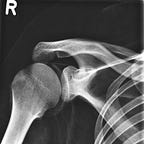An Action Potential — An Explanation
Published in
1 min readApr 26, 2017
Action potential is reached at the Axon Hillock of the axon. A change in membrane potential of ~15–20 mV is sufficient to cause the propagation of an Action Potential. The action potential in a particular neuron occurs as follows.
- Resting membrane potential = -70 mV
- Summation of graded potentials cause a depolarisation of roughly 15–20 mV at the axon hillock.
- Na+ ion-channels open, causing the influx of Na+ ions.
- As the Na+ ions flow in, the K+ ion-channels open, allowing the influx of K+ ions.
- The change in membrane potential from 0 — +40 mV is called the overshoot.
- At +40 mV, the Na+ ion-channels close. Lowering the membrane potential
- At 0 mV, the K+ ion-channels close.
- The dipping of membrane potential below -70 mV is known as undershoot.
All Action Potentials are roughly 2 ms
All Action Potentials have amplitude of -70 — +40 mV
